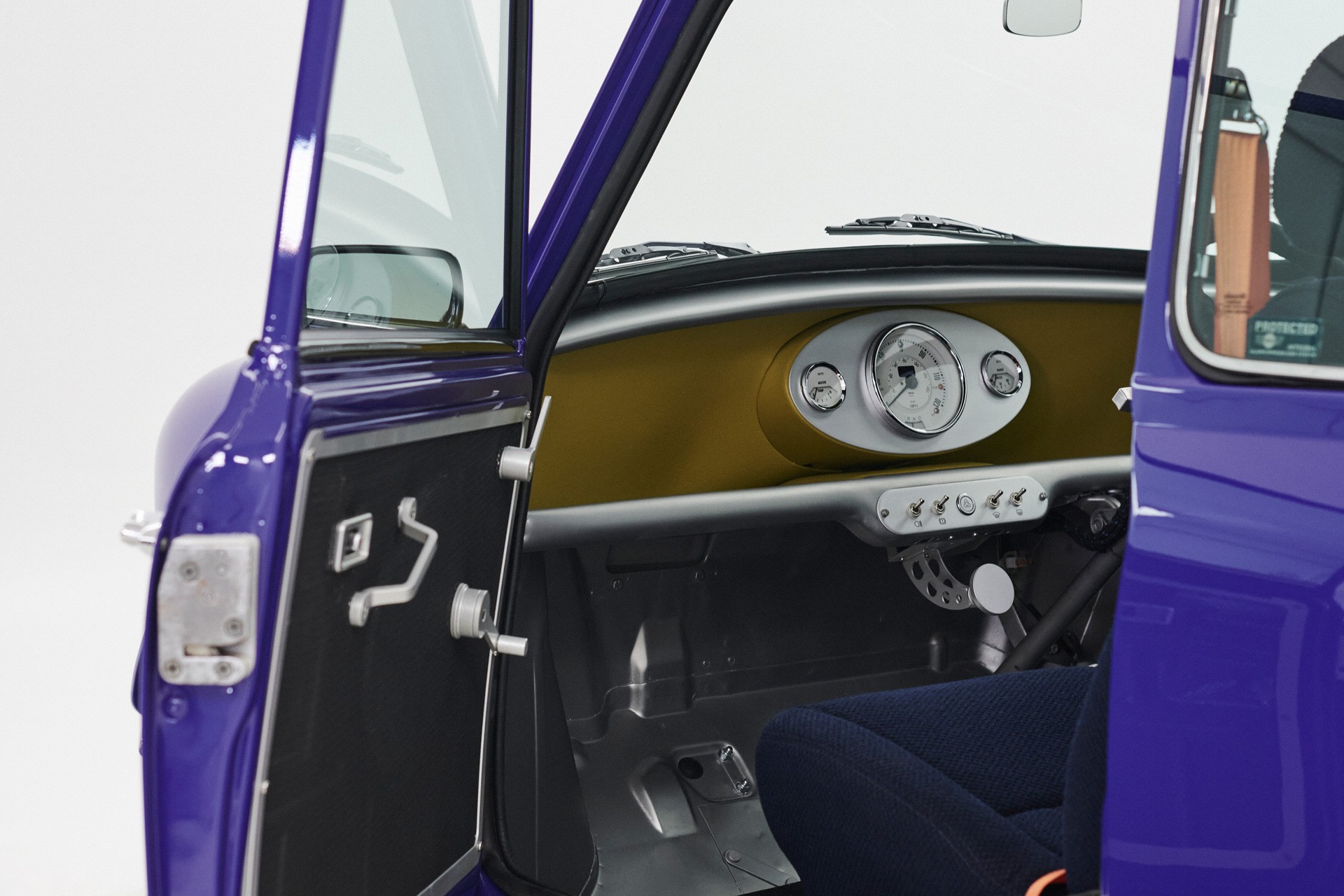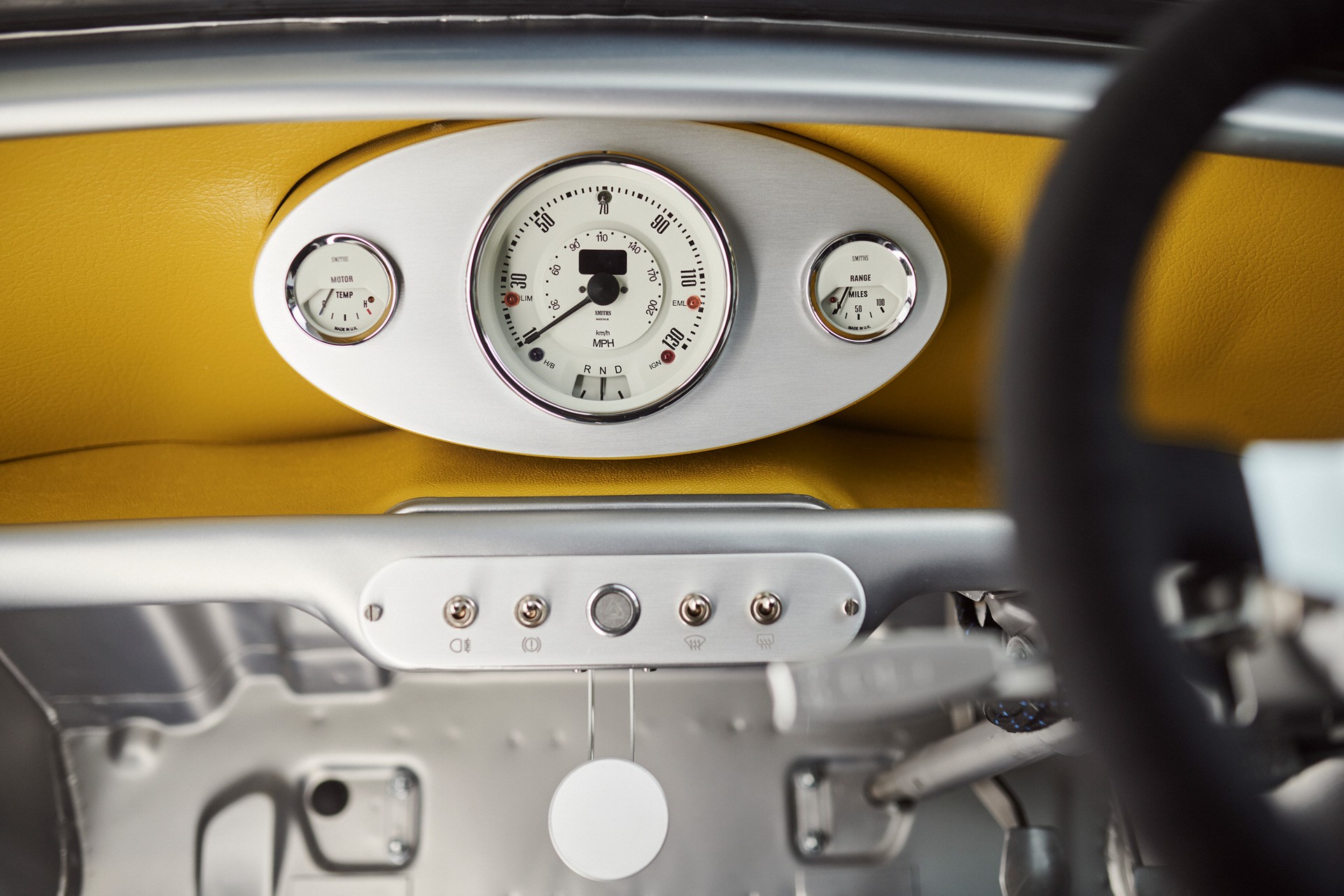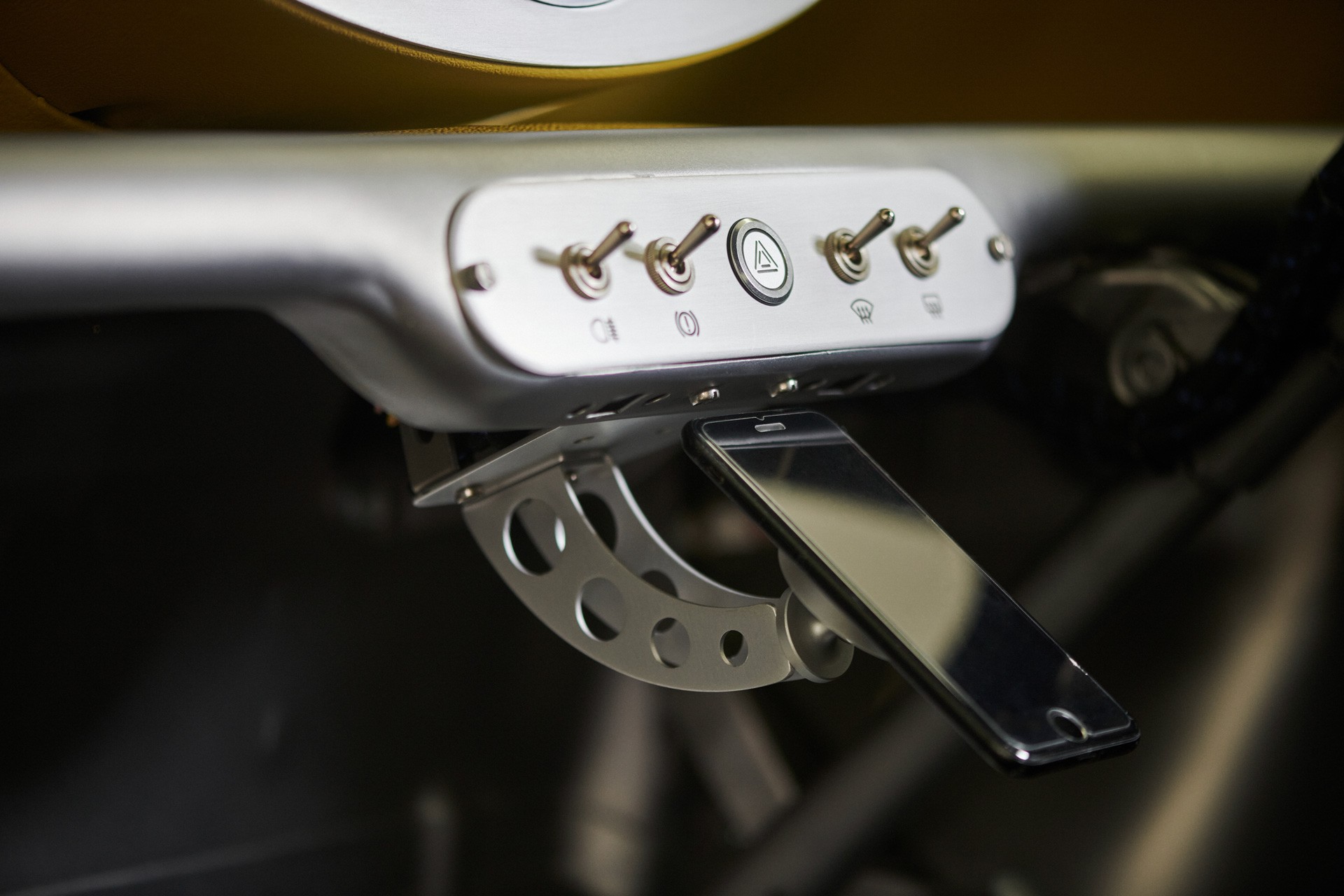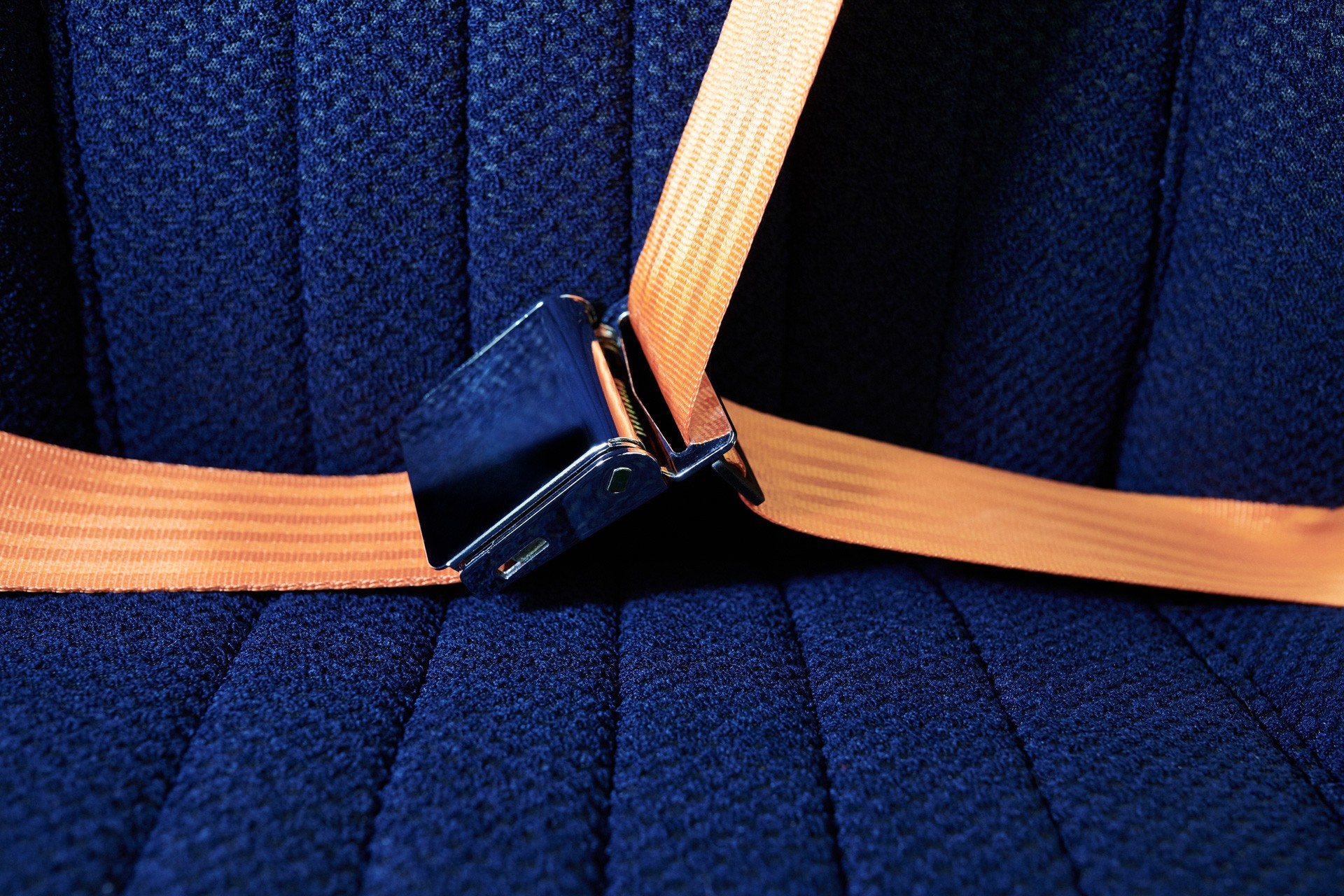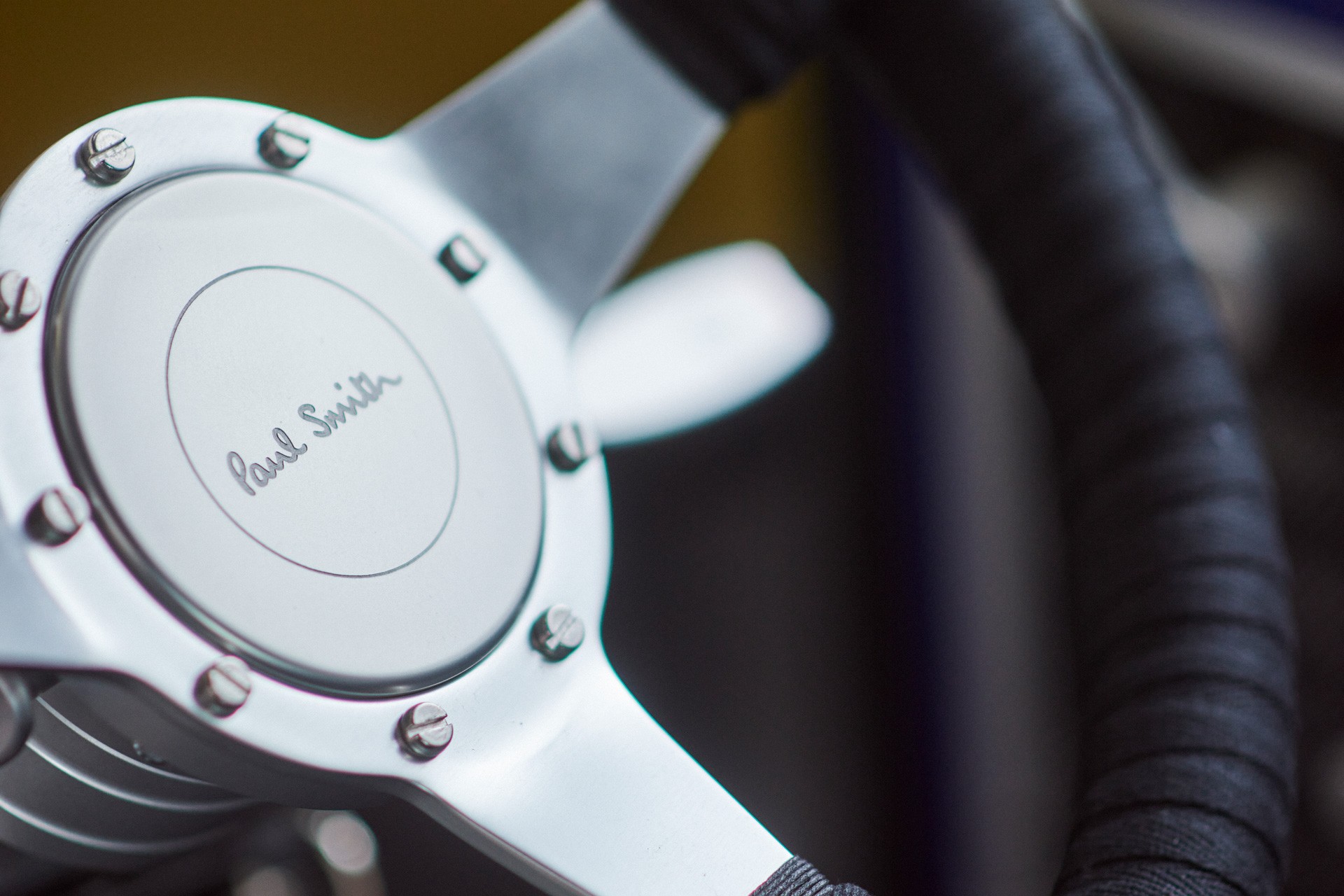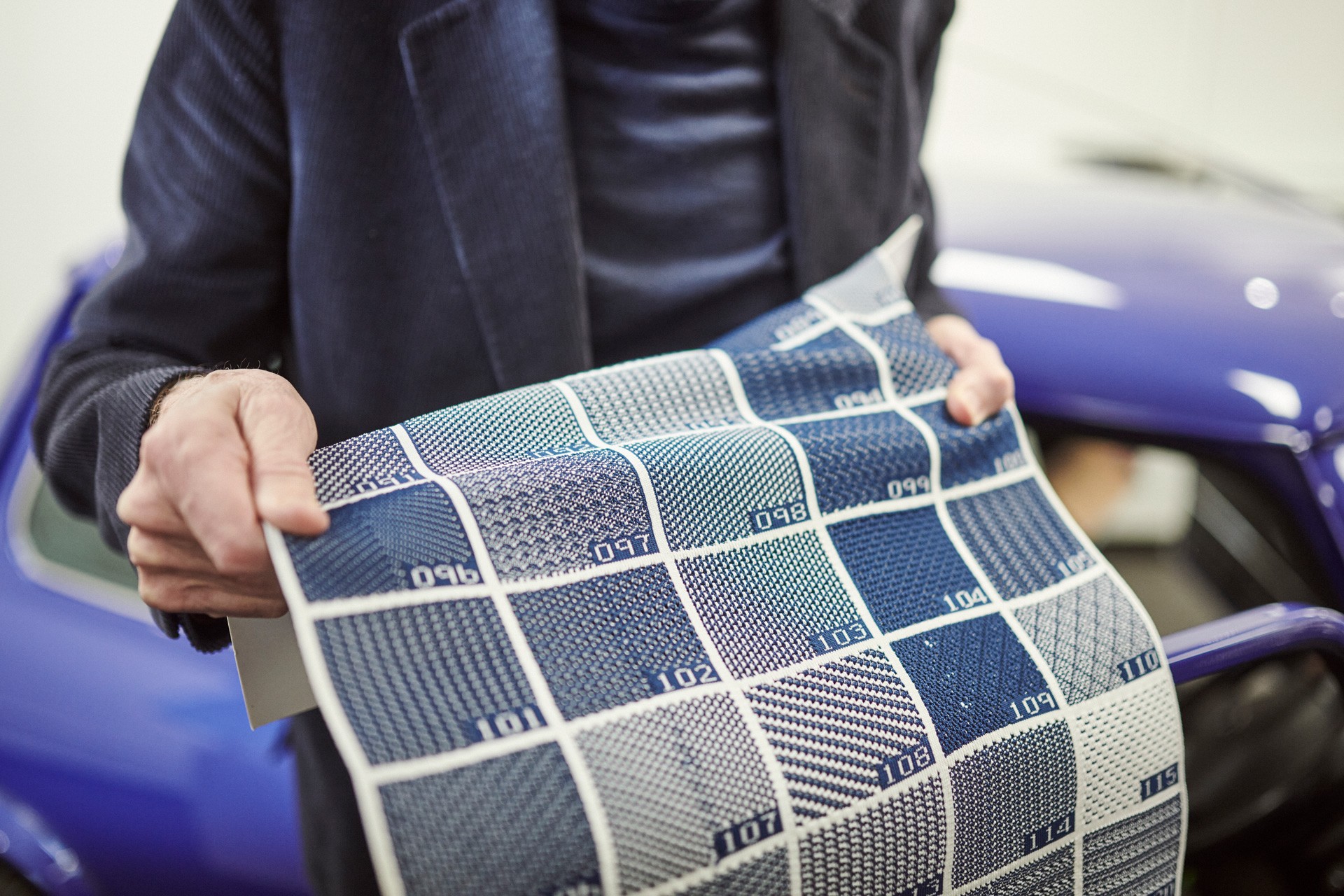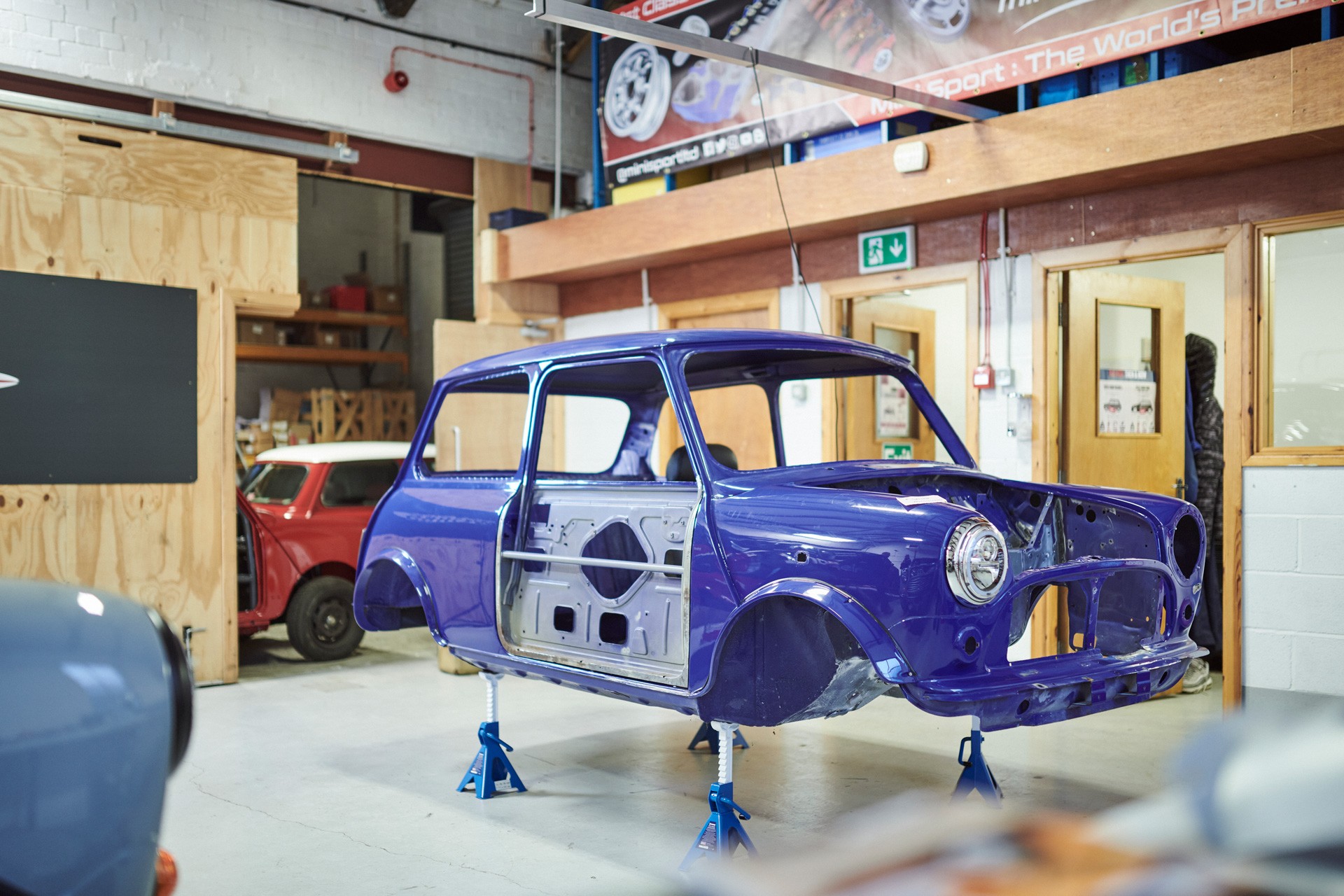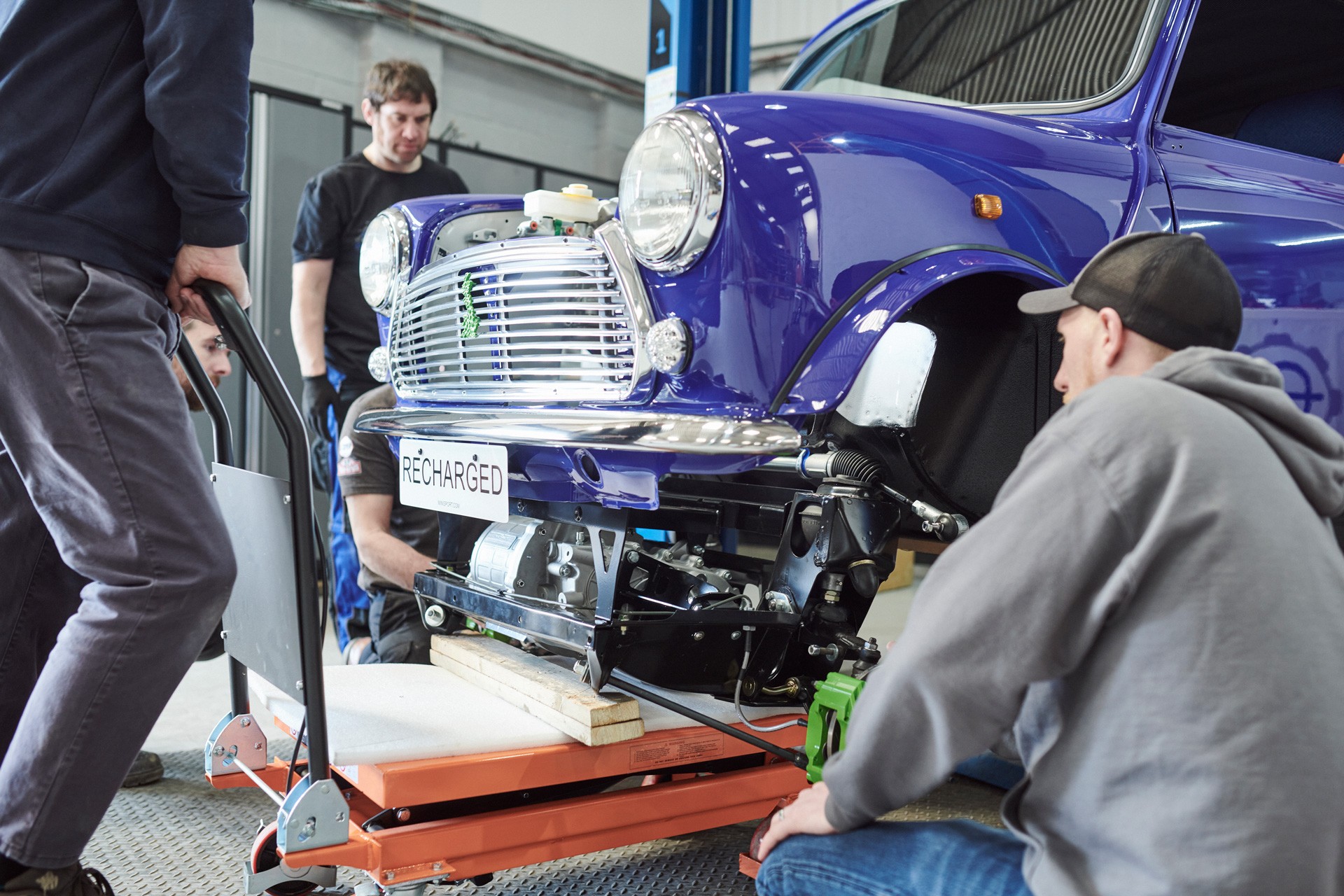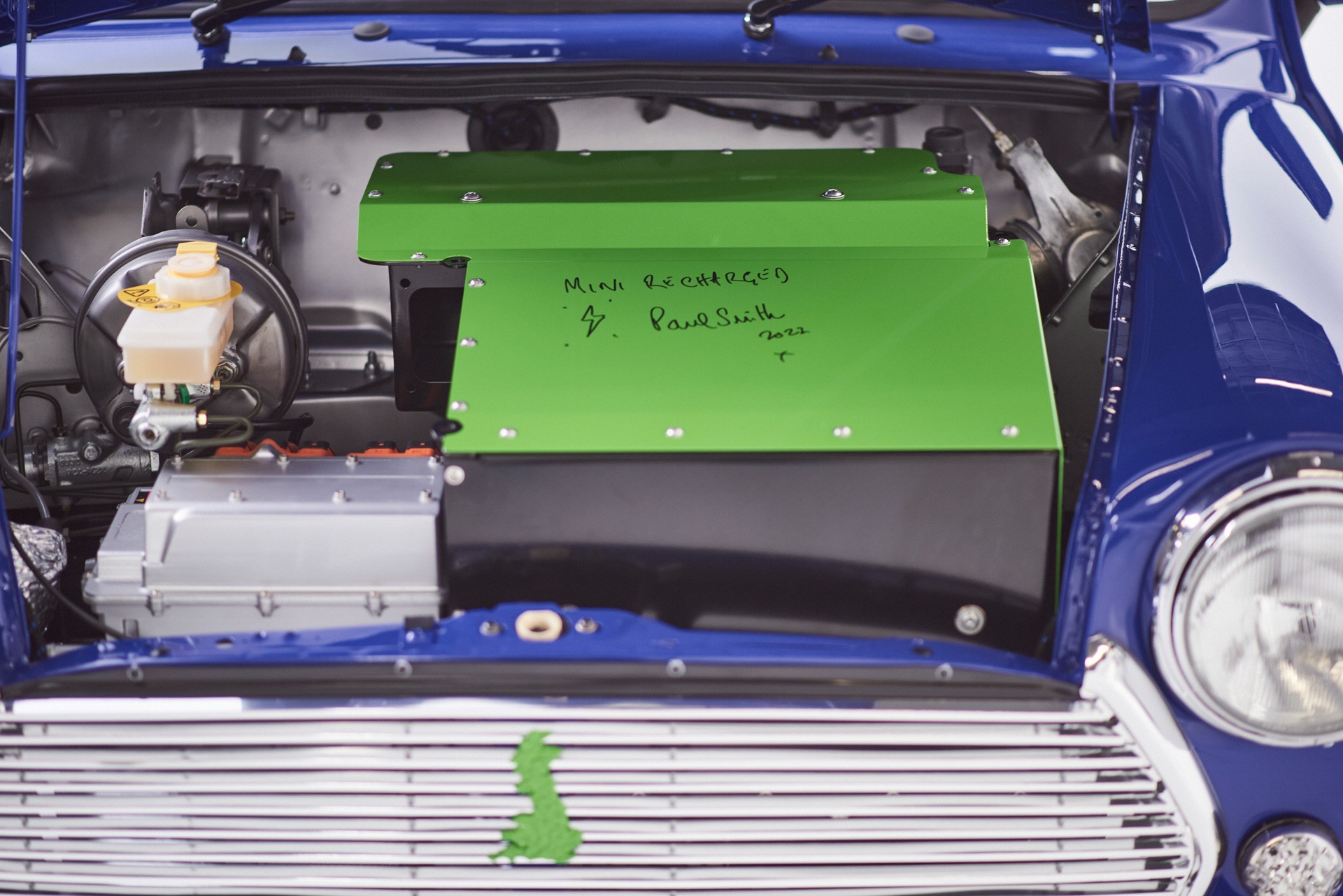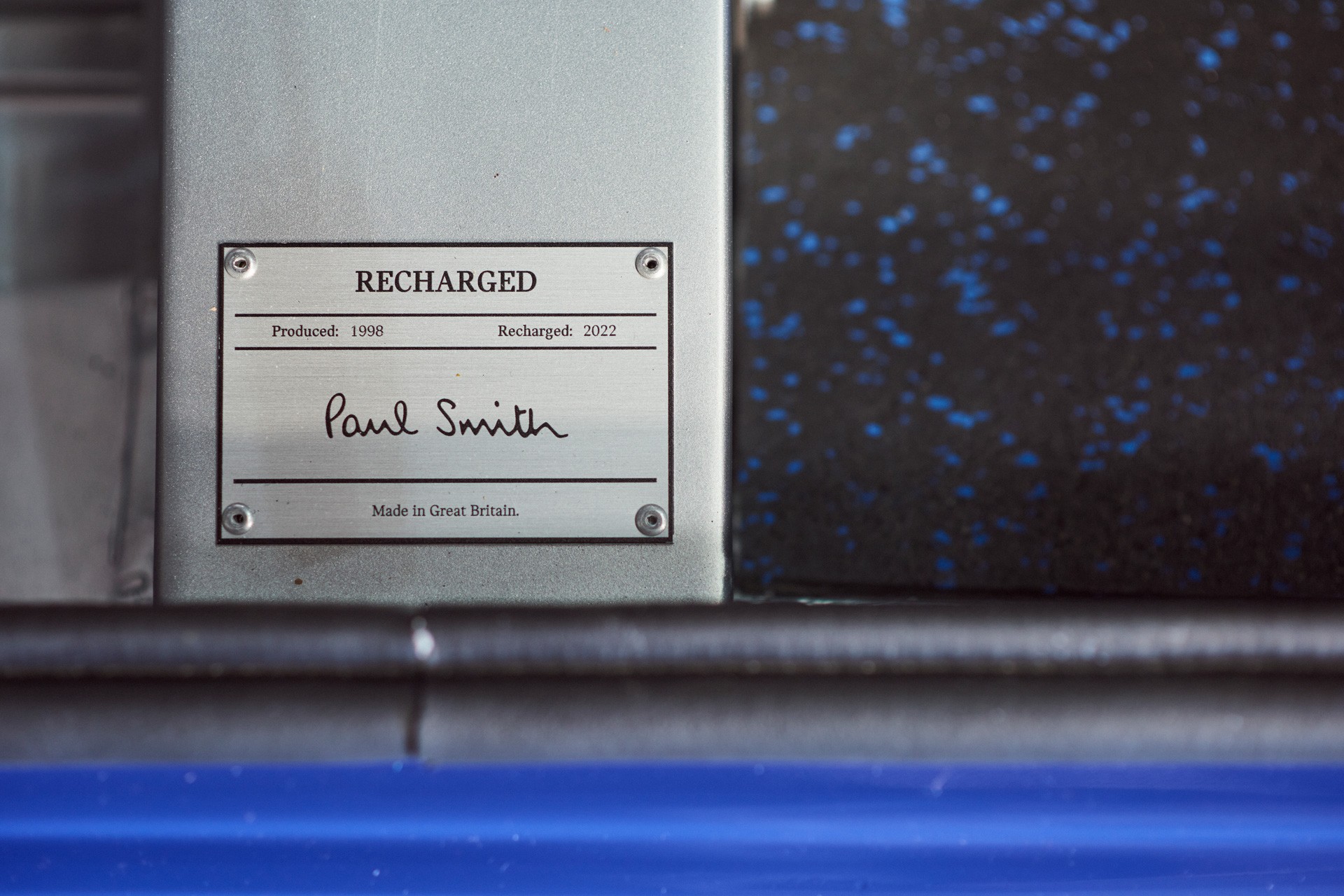Our tool for managing your permission to our use of cookies is temporarily offline. Therefore some functionality is missing.
PLANET.
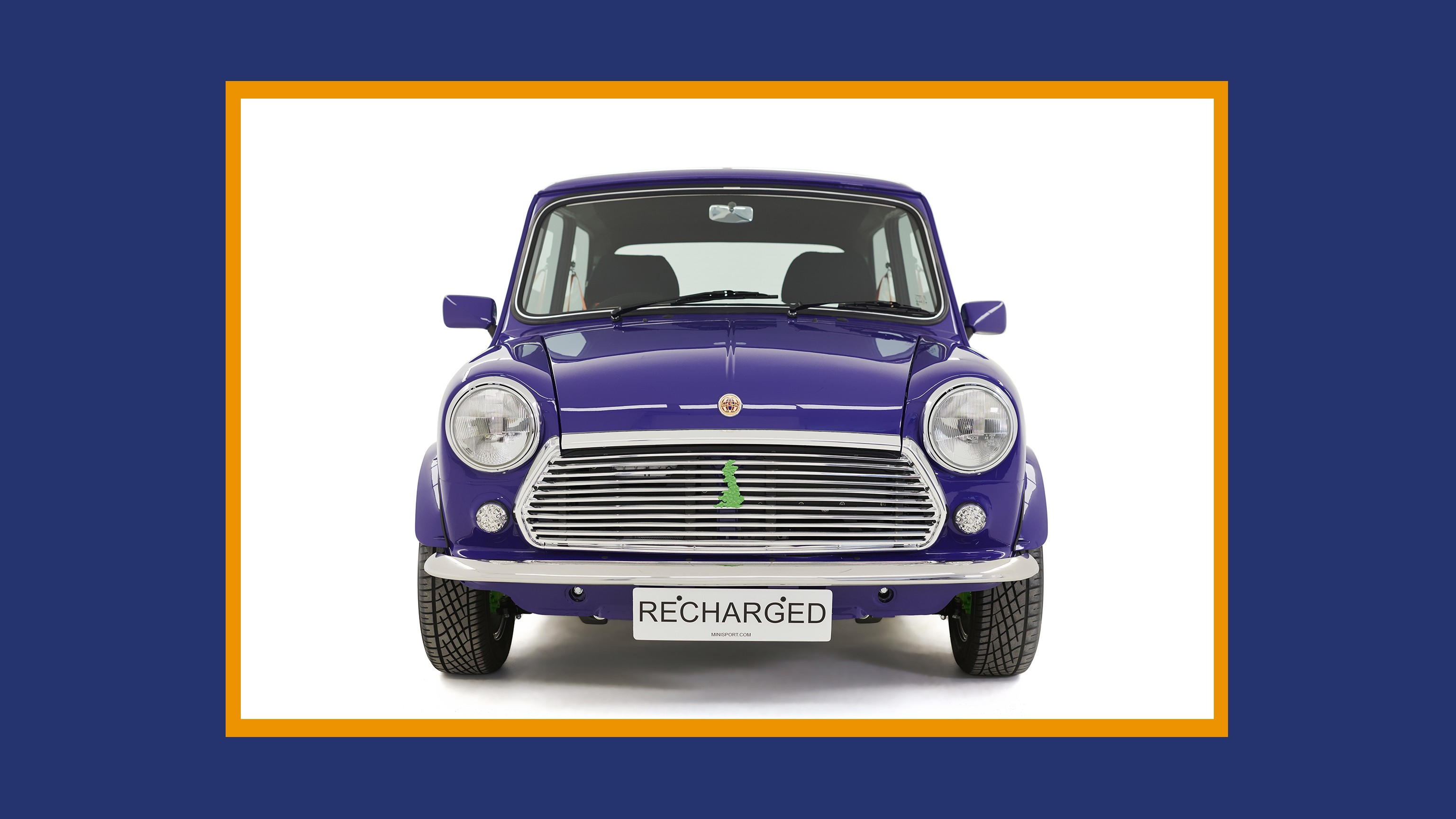
“TURNING IDEAS INTO REALITY, IT´S LIKE A DREAM COME TRUE.”
The MINI Recharged upcycling project converts petrol models to electric cars. Even design icon Sir Paul Smith has retrofitted his own model, the 1998 Mini Paul Smith Edition – and has reinvented the classic in the process. We followed the project in the spirit of BIG LOVE FOR THE PLANET.
.gif)
It’s 9 am on the dot when Paul Smith walks into Holborn Studios in Islington, North London. Portraits of previous visitors hang on the brick walls; it’s a pop culture gallery including David Bowie, Kate Moss, Oasis, The Clash and The Rolling Stones. And on this particular Monday in April, another two British icons are meeting here: Paul Smith and MINI – the fashion idol and the cult car brand.
It’s tense in photo studio number six. Photographers, sound engineers, camera operators, mechanics, makeup artists and production managers are preparing the presentation that Sir Paul and MINI have been eagerly awaiting for six months now. In front of a white screen, the latest collaborative project glows in deep blue: a classic 1998 Mini, a model from the Paul Smith Edition from that year, limited to just 1,800 units globally. But the highlight is hidden under the bonnet: where there was once a combustion engine, there is now an electric motor. Paul Smith has reinvented his old classic.
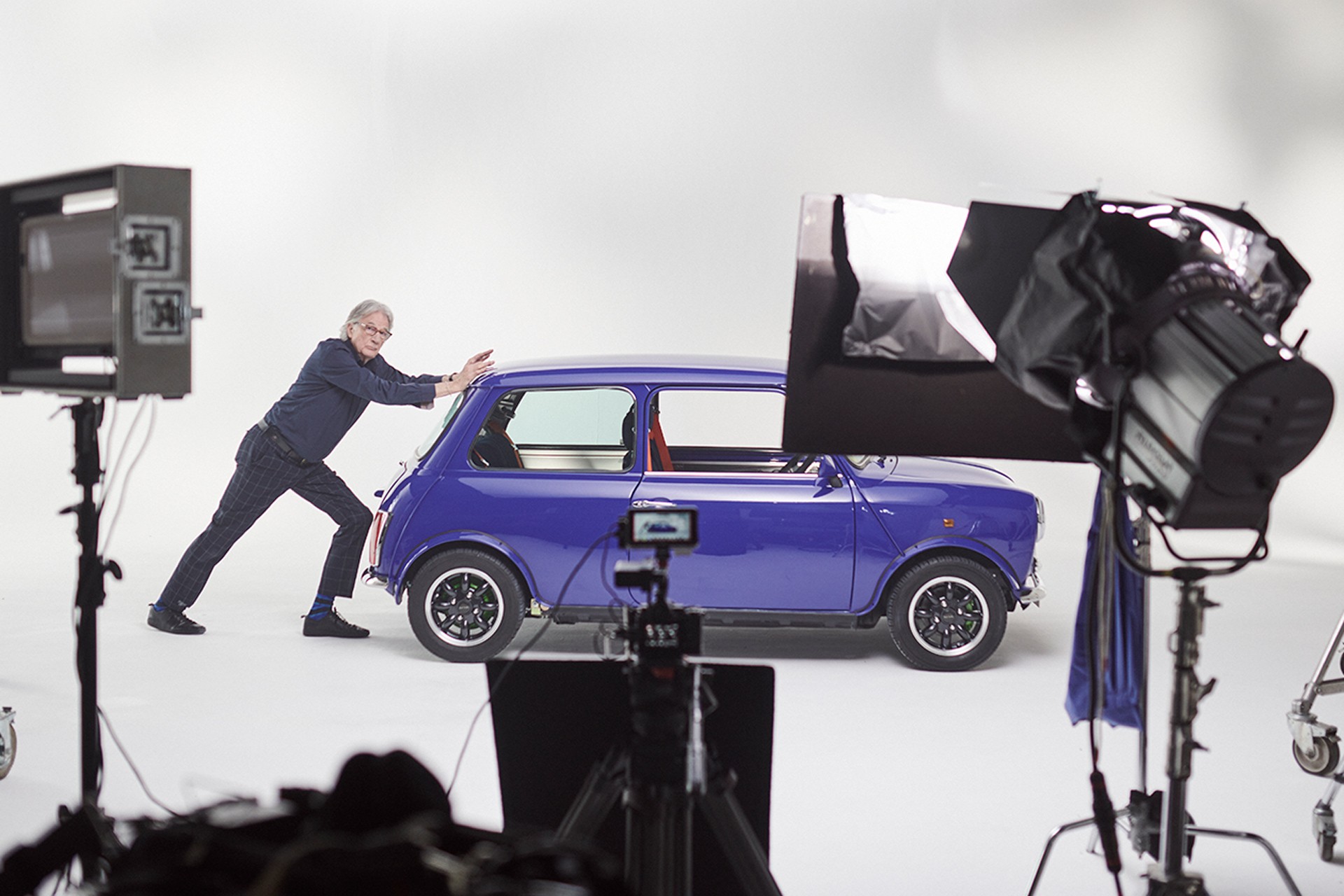
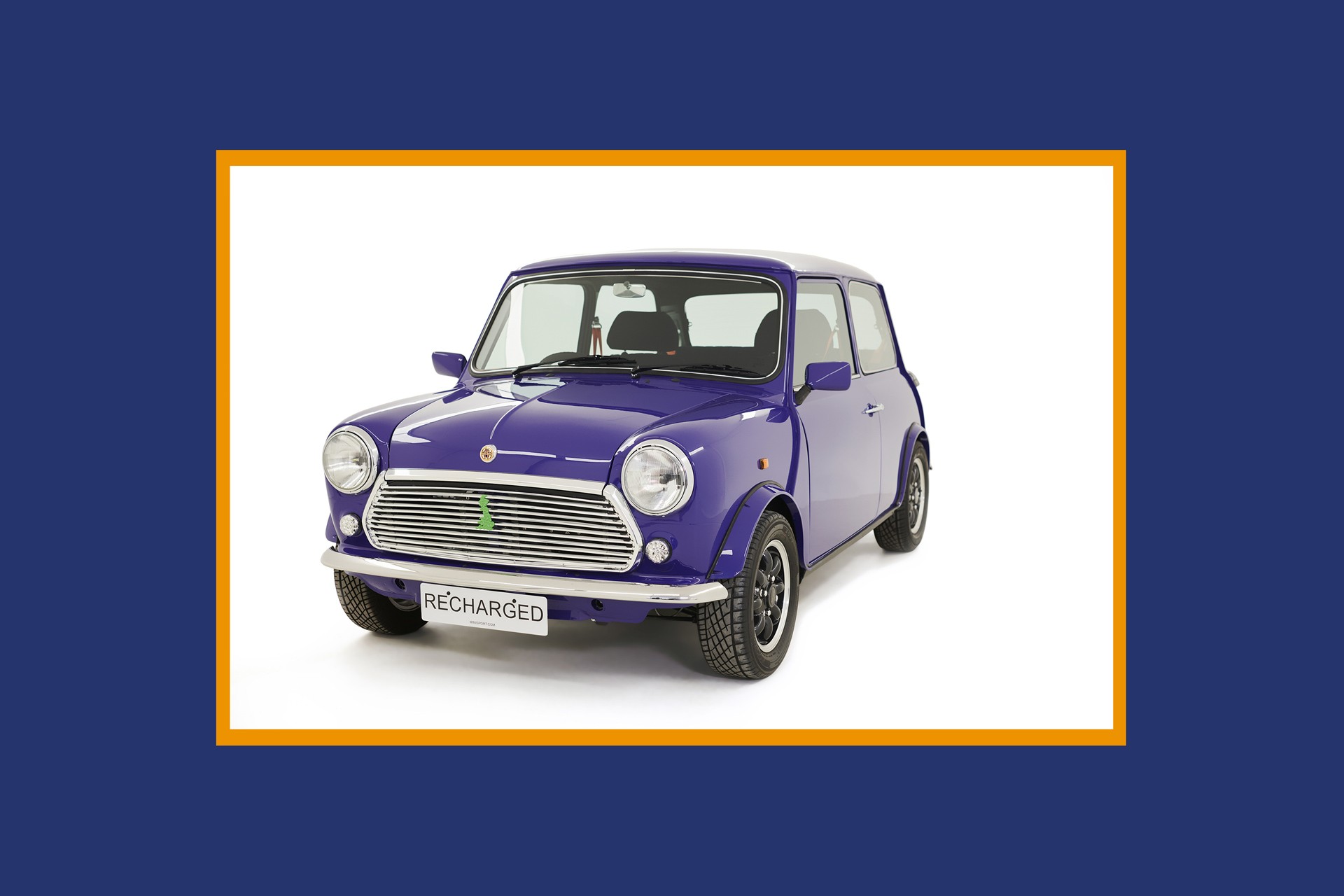
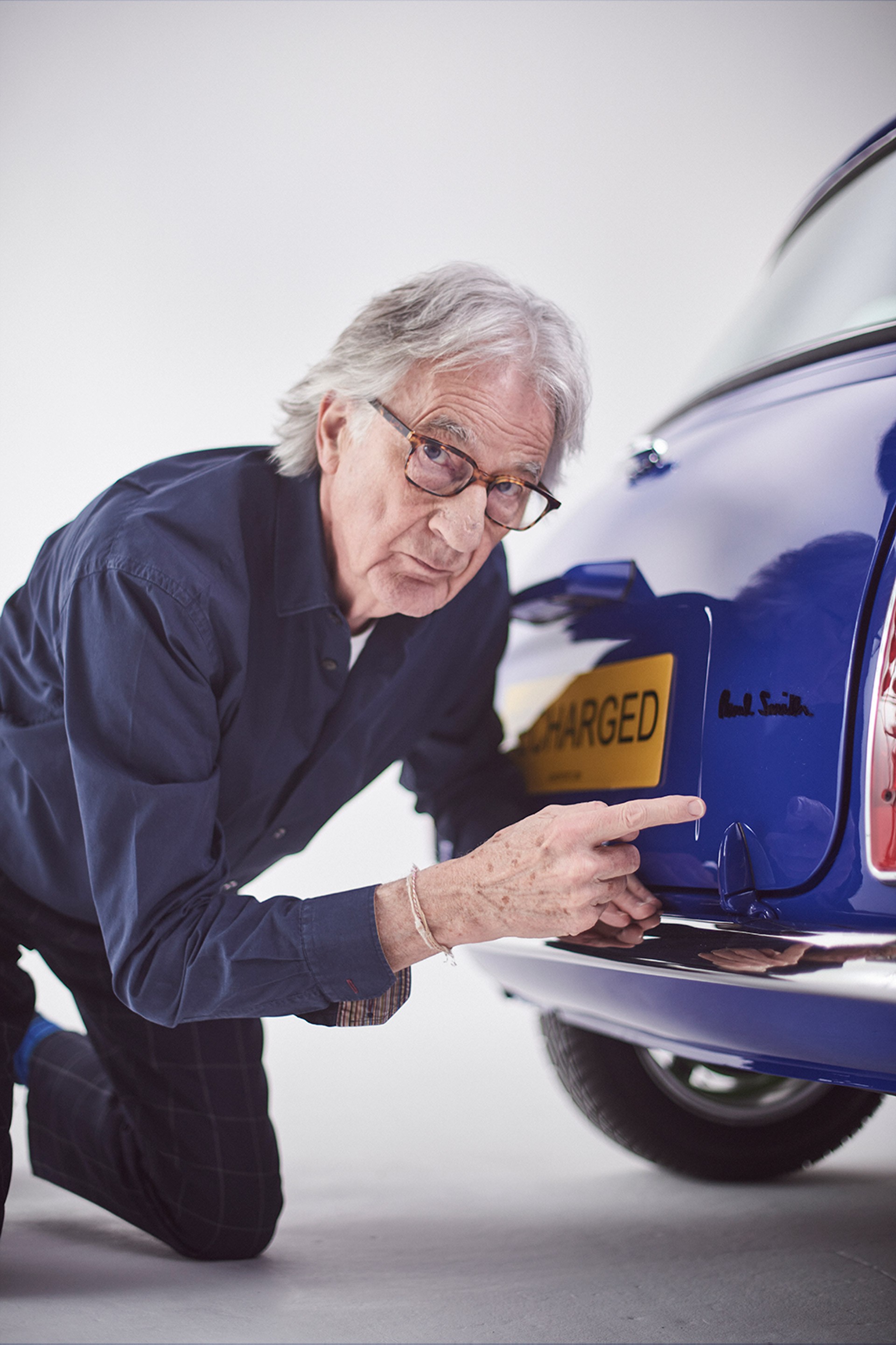
Once a vision, now a reality.
The creative all-rounder is seeing the model reborn for the first time today. The aim was to be able to present a modern vision of the much-loved cult car to the global public at the Salone del Mobile in Milan in June 2022. It’s running right on schedule. But will this unique piece also impress? Will it fit in with Paul Smith´s legendary artwork – or perhaps stick out a little?
The design icon – wearing chequered trousers, a navy blue shirt and jet-black trainers – approaches the car. He drifts through the studio, nonchalant and unfazed by the hustle and bustle going on in the shadow of the spotlights. Then he inspects the car with eagle eyes: the logo on the grille, the black rims adorned with his famous signature.
Now he takes a look at the interior, running a hand along the orange seatbelts, getting down on one knee to inspect the bare, uncovered base panel and the rustic floor mats. Then he sticks his smartphone to the magnet next to the steering wheel – an element that except for the speedometer, replaces almost all of the old buttons and functions on the dashboard.
He runs his fingers across everything as if they were sensors, seemingly getting a feel for the car’s aura. Sir Paul repeatedly lets out a “wow!” or murmurs “very nice” and gives the mechanics – who not only followed the brief, but also brought in their own ideas – a pat on the back. His “well done” appears to be a relief. The car has successfully been transformed into an electric car – and its maker is obviously electrified after seeing the result. “Having ideas is never the problem. The challenge is to turn them into reality. If you achieve that, it’s like a dream come true,” says Sir Paul.
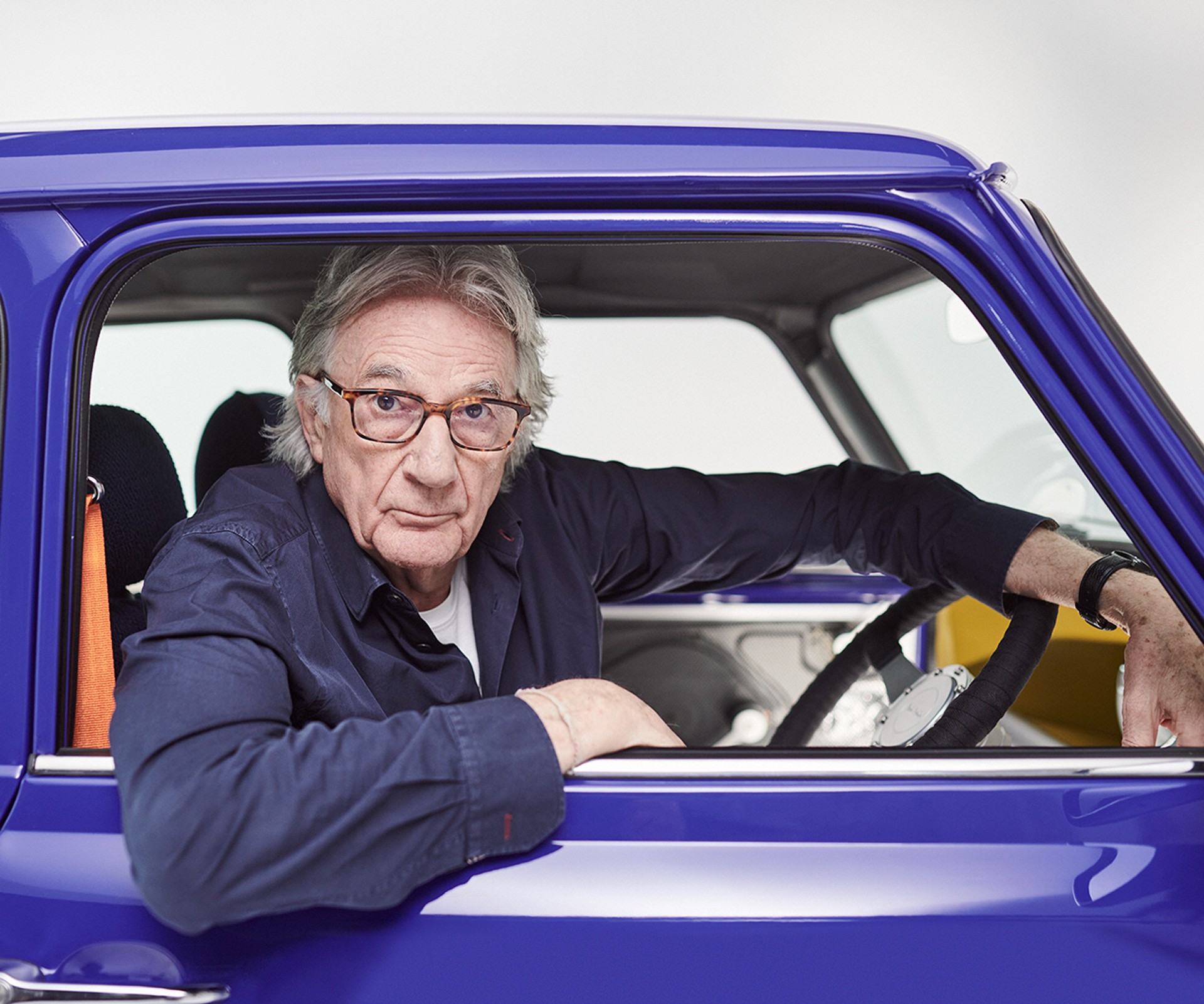
ABOUT PAUL SMITH.
Born in Nottingham, England, in 1946, Sir Paul Smith is an icon in the world of fashion and the creative industries. He worked as a buyer and boutique manager before opening his own business in 1970. The designer created his first men´s collection in 1976. Today, his business has expanded to include more than 130 shops. In the late 1990s, Smith´s famous coloured stripes led to a cooperation with Mini. He drives an electric MINI in London and had a charging point installed right next to his famous studio in Central London. You can find out more about Paul Smith here.
Pioneering project: MINI Recharged.
The fact that this idea was realized can be attributed to the project MINI Recharged.Behind this are the engineers from the company “Recharged Heritage Limited”. As a new MINI partner, they are implementing this pioneering project: converting classic Minis with combustion engines into modern and emission-free speedsters. Thanks to a 72 kilowatt electric engine, an older model gets a new life and an upgrade. Upcycling, the current megatrend, now for cars too.
The project also continues on with the idea of Alec Issigonis, inventor of the classic Mini: the engineer developed the classic Mini as a response to the oil crisis of 1959. Minimum fuel, maximum storage space – that was the concept. In times of climate and energy crisis, this concept is all the more relevant. And of course, as a long-standing friend of MINI, Paul Smith was the very first to be asked if he would like to recharge his classic.
In summer 2021 the fashion designer presented the MINI STRIP at the IAA in Munich: a radically reduced, sustainable concept car. Sir Paul´s Recharged model takes this idea and finds a new application for it. “The three things that describe the car perfectly are quality, sustainability and functionality,” says Sir Paul. But: “this car also respects the past.”
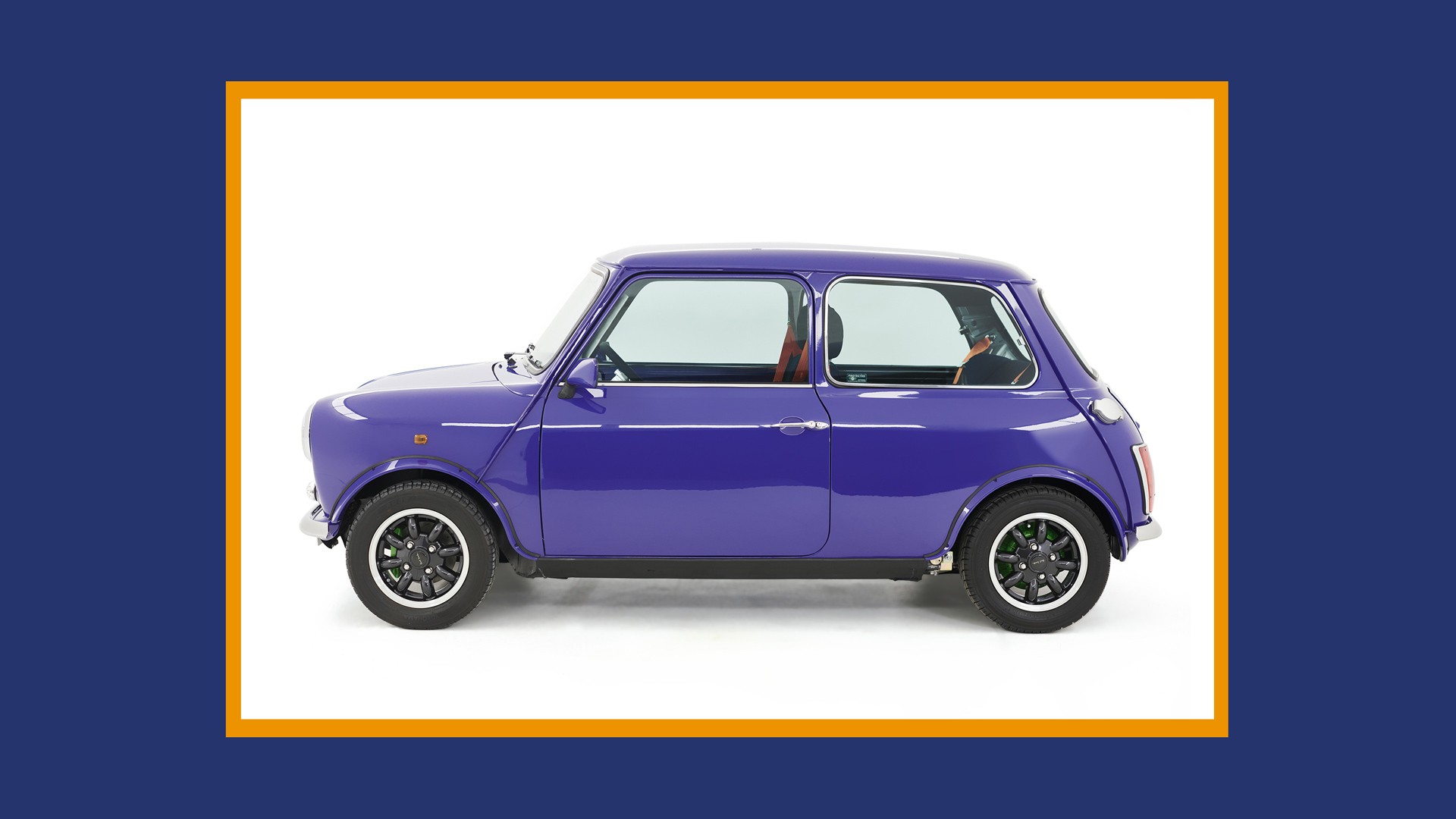
.gif)
The perfect combo: Paul Smith x MINI Recharged.
It goes without saying that the fashion designer wanted to leave his mark on the classic. And that is indeed what he does; with a black pen, Sir Paul signs the lime-green battery box – a colour saved from the 90s and brought to the present day – and draws an electric-charged lightning symbol next to it. Where there was once vintage, there is now voltage. “We turned a car from the 90s into something which is very relevant today,” says the designer.
Now the photographer and cameramen want good pictures. And of course Sir Paul, who has enjoyed more than 50 years of success in the catwalk business, knows what is needed in the studio – and seems to enjoy the show. He starts goofing around for the camera with his new toy; he takes the charging cable out of the boot and acts like it’s a skipping rope; he sprawls across the back seats, sticking his legs out the window.
It is a typical Paul Smith number: bright, warm, casual. And above all, authentic. The man lives and breathes his brand. And part of this is also a moment of surprise. So, true to form, he whips out a blue, slightly washed out shirt. The story behind it? It is exactly what he wore in 1996 when he designed the original car for the Mini Paul Smith Edition at the MINI plant in Oxford. When the engineers asked which colour the car should be painted, the fashion designer showed them his shirt: exactly this colour – and proceeded to cut a scrap of fabric from the hem for reference. A little more than two decades later, the man holds his holey shirt up to the blue of the car and grins. It’s a picture for the MINI history books!
Back to the beginning: That stays, this goes.
Work on the Recharged model also began with a meeting in Cowley, Oxford. Flashback: on an icy day in December 2021, Paul Smith meets with a technical team to brainstorm. Smith pulls a piece of paper with questions on it from his dark blue corduroy jacket. The most important one: Can this go? It becomes the guiding principle of the conversion.
“It’s like when you move into your auntie’s flat, you don’t change everything around out of respect – but you modernise some bits,” says Smith while inspecting the classic. But in the end, the modernisation is more of a decluttering – after all, it is not only the drive that should be sustainable, but also the overall concept. So out with plastic, out with coverings and out with leather, and in with seat coverings made from recycled textiles and floor mats from recycled rubber.
But early on there are things that need to be weighed up: ambition versus feasibility. That’s because cars aren’t suits, as Sir Paul himself says. Car design is a complex process, and there are safety guidelines to be followed. Completion is scheduled to be a few months later – that doesn’t leave much time. Smith understands the engineers’ concerns. They suspect that apart from the body of the car, they will have to remake everything.
Upgrade: The transformation begins.
The next stage of electrification leads to a workshop in Burnley in the north. There, work gets going immediately. Upgrading the engine is the easiest exercise. The mechanics in Burnley are more concerned about the reductions in the interior. Removing the levers and controls on the steering wheel and all the electronics for the full-beam headlights and the windscreen wipers proves to be tricky. Even the old speakers from the 90s are sacrificed to the ‘less is more’ philosophy – and are transformed into a wireless sound system. The old lights make way for modern LED technology. The speedometer is also to be redesigned, but how? The mechanics made a cardboard model and take photos of it held in the interior; they then send the drafts to the WhatsApp project group.
Electrification: The car comes to life.
Three weeks later in a workshop in Bristol, the car gets its heart transplant – a battery and electric drive are installed. By exchanging the motor for a battery, you alter the weight distribution in the car and therefore also the handling – and the driving pleasure. So electrification needs to be adapted to the original’s construction. The work on Paul´s model evolved organically and the engineers learned a lot for the Recharged project overall. It was also a valuable experience for Paul Smith.
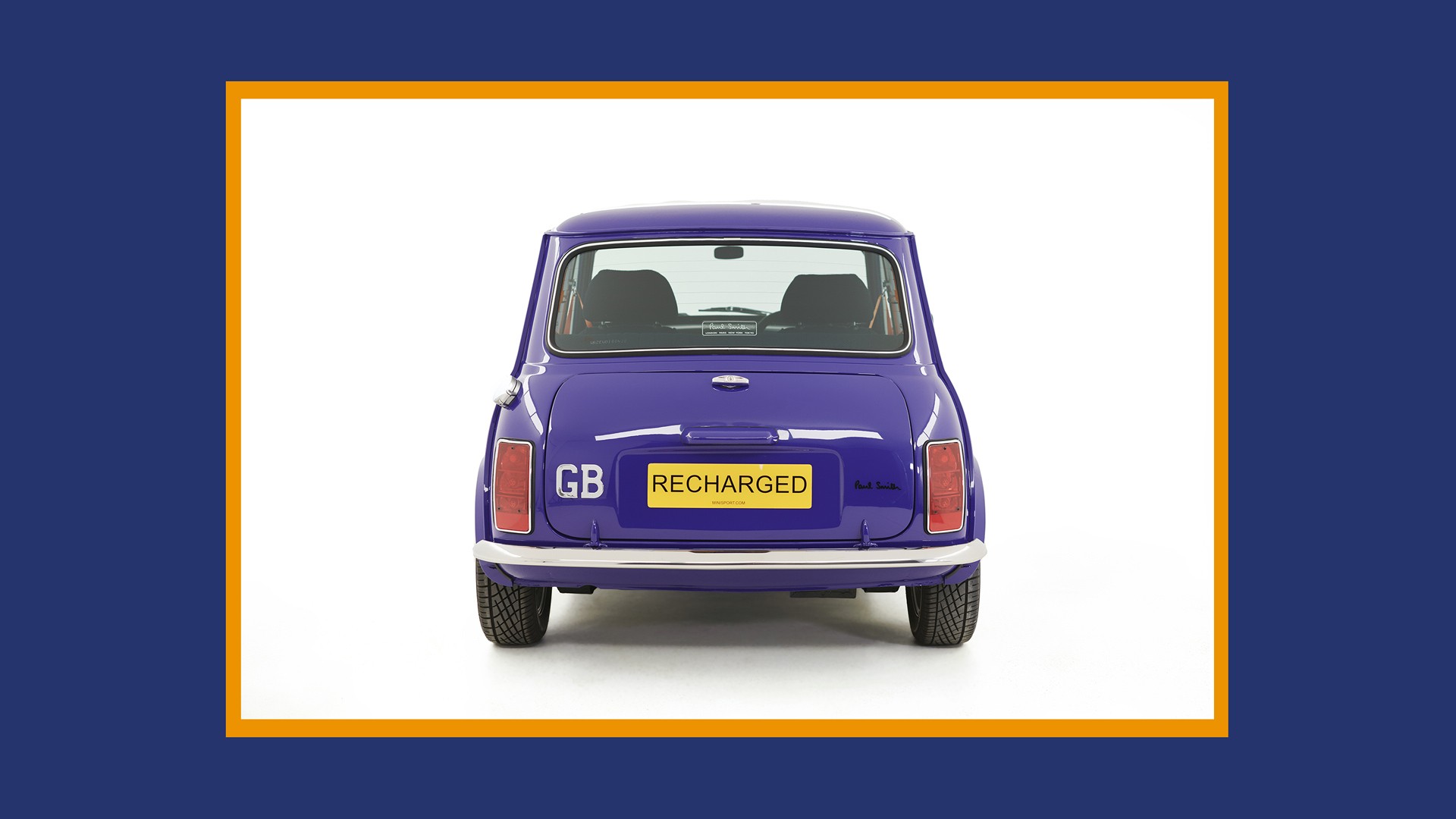
.gif)
Back in London, two icons reinvent themselves.
Paul Smith has made himself comfortable in the driver’s seat at the Holborn studio. “What Paul Smith has made himself comfortable in the driver’s seat at the Holborn studio. “What makes brands like MINI and my business – which has been trading for a long time now – remain relevant is to constantly reassess, reassess, reassess – otherwise you fall by the wayside,” he says. Memories of his Mini Paul Smith Edition come to mind. Back then, 300 models were designated for the British market, and 1,500 went to Japan – where it was very popular. Paul Smith was supposed to sign a number of these cars there – once, he was even stopped on the street by a Mini driver who forcefully instructed the fashion icon to “sign!” Some fans even detached the glove box of standard Minis in the hope of getting an autograph.
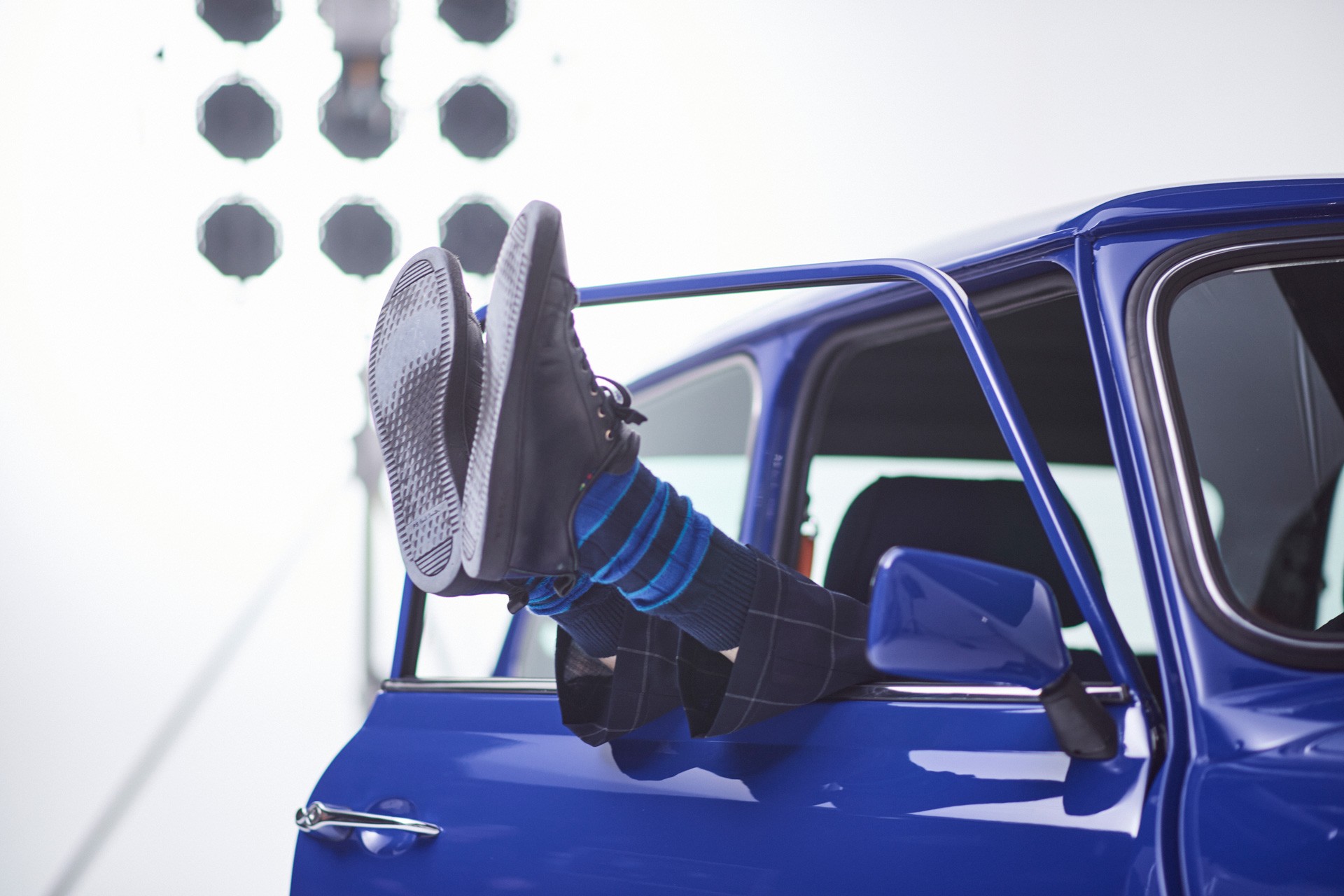
Essential: Sustainable mobility that suits the times.
Perhaps these fans will follow in their idol’s footsteps and have their classics converted to electric models. Paul Smith hopes that his work will inspire several future generations: “We have to be conscious of our lifestyle to make sure we do not contribute to climate change. We therefore wanted to make a car that is a better fit and more relevant for today’s world than the original.” After all, Paul Smith´s MINI Recharged is on the one hand a work of art, but on the other a symbol for the possibility of a sustainable circular economy.
Besides clothing, Paul Smith has also designed furniture, cameras and books, and has collaborated with many brands – but his connection to MINI remains special. Why? Because he himself has been driving a MINI for years. Because the car is compact and functional, always offering pleasure and surprising details – and that also goes for his MINI Recharged model, of course. Sir Paul grips the sides of the steering wheel, it clicks – and just like that, he removes the steering wheel and holds it like a Frisbee in his hands. He slides smoothly out of the car, managing not to bump his long legs on anything. Then he says: “It´s just a car I love.”
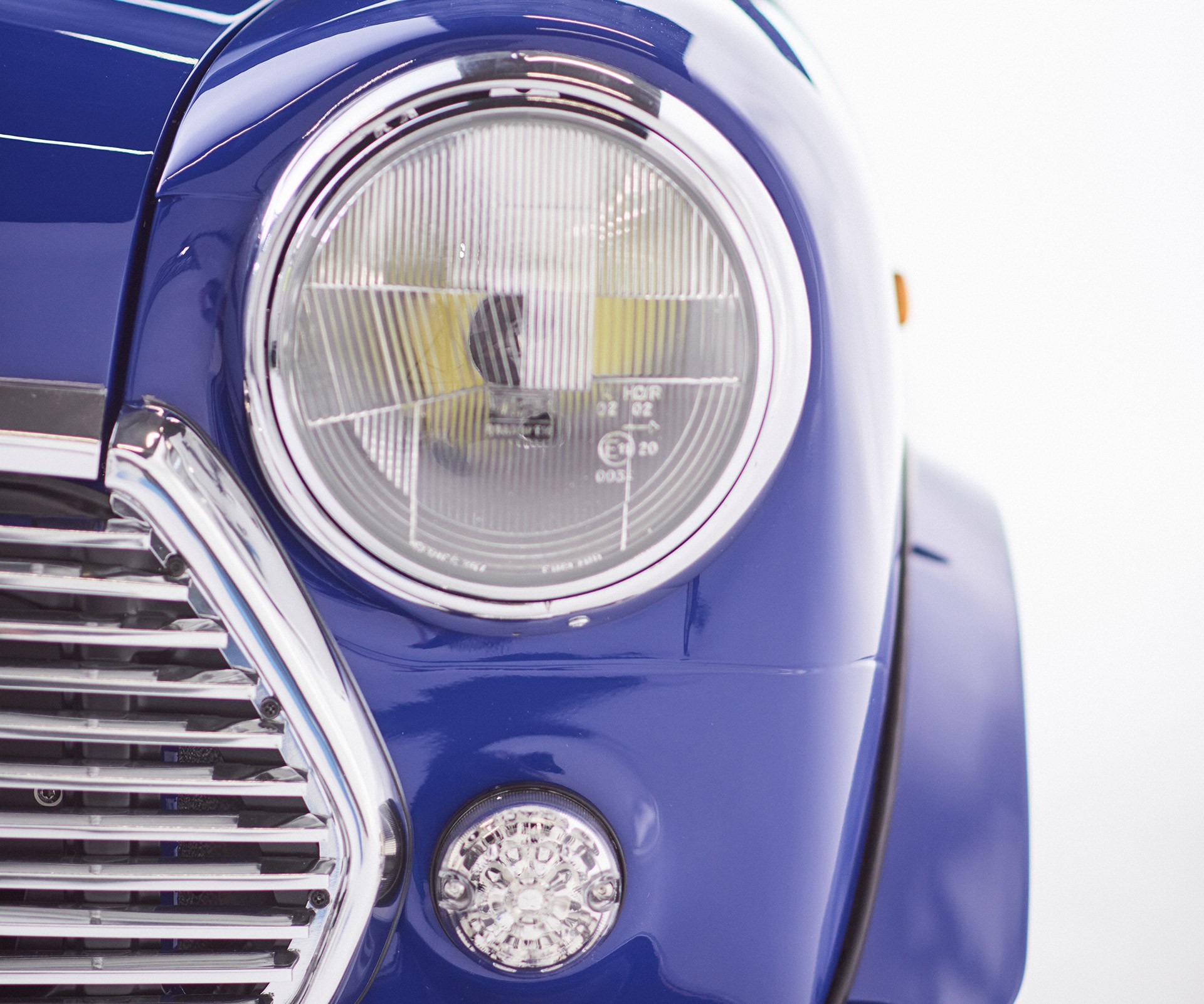
About MINI Recharged.
Paul Smith’s customised car is part of the MINI Recharged Upcycling Project, which combines tradition with pioneering technology by installing an electric motor in the original. The engineers from “Recharged Heritage Limited” are making this dream come true. As a new MINI partner, they are implementing MINI Recharged and have converted the classic Mini into an emission-free vehicle by installing a 72 kilowatt electric motor. The battery has a range of around 160 kilometres (roughly 100 miles) with a 6.6 kilowatt charging current. This means that they are permitted for travel in many large cities’ environmental zones once again. What’s more, all changes made to the substance of the vehicle during the conversion as part of MINI Recharged are reversible. Careful handling of the vehicles’ historical heritage is an important part of the concept. This means it is also possible to restore the classic Mini to its original condition at a later date. To this end, the original engine of each vehicle is marked and stored during the conversion, so it can be reused in the event of a future retrofit of the classic Mini.
Disclaimer :
The bespoke upcycling of the classic Mini is carried out exclusively in the United Kingdom by our specialist partner “Recharged Heritage Limited”. Each converted vehicle is given an individual number, making it unique.
